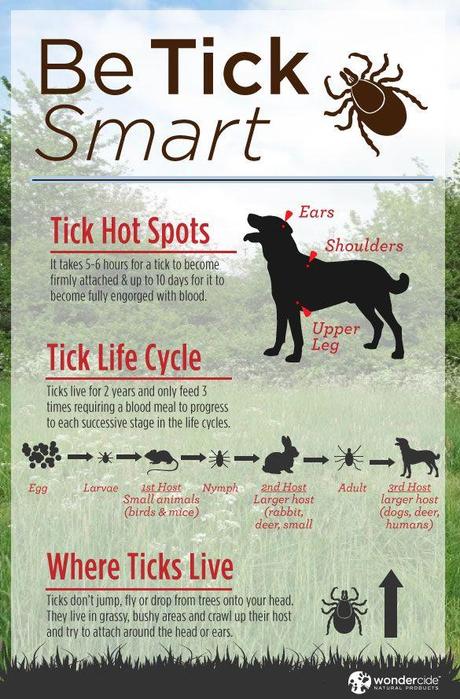
Ticks are found in nearly all parts of the country and are especially prevalent in spring and fall. Ticks are vectors for several diseases in dogs, including:
- Rocky Mountain Spotted Fever (RMSF)
- Ehrlichiosis
- Babesiosis
- Hepatozoonosis
- Lyme disease
In the case of Lyme disease and Rocky Mountain Spotted Fever, these diseases can also spread to humans and cats. And ticks can carry different forms of ehrlichiosis, babesiosis, and hepatozoonosis that can affect humans and other animals.
Check out Tick-Bite Paralysis in Dogs
The saliva of ticks can also produce an allergic hypersensitivity reaction and, in the case of the female wood tick, lone star tick, and Gulf Coast tick, a disease called tick paralysis. The most common ticks, such as the dog tick, have males about the size of a match head and females that expand to the size of a pea after a blood meal.
Ticks do not run and jump as fleas do, but scuttle around slowly. They climb up grass and plants and hold their legs up to sense passing hosts. When a warm-blooded animal walks by, the adult tick crawls onto them and begins feeding. Ticks can fasten to any part of the dog’s skin, but are commonly found around the ears, between the toes, and sometimes in the armpits. A severely infested dog may have hundreds of ticks all over her body. The ticks insert their mouths, attach to their prey, and engorge themselves with a blood meal.
During feeding, tick saliva can get into the host’s body and blood stream; this is how diseases are transmitted. Males and females mate on the skin of the dog, after which the female takes a blood meal and then drops off to lay her eggs. This usually occurs 5 to 20 hours after the dog acquires the ticks. Thus, prompt removal of ticks is an effective method of preventing tick-borne diseases. Ticks may drop off a dog and transfer to people, although this is not common. Once a tick starts feeding on a dog, it will feed until it is engorged and will not seek a second host.

Be Tick Smart *
Tick Treatment
Always examine your dog after hiking in tick-infested areas. If you find only one or two ticks, the easiest thing to do is remove them. Keep in mind that the blood of ticks can be dangerous to people. Therefore, do not crush or squeeze a tick with your bare fingers. Before removing the tick, put on disposable rubber or plastic gloves. Ticks that are not attached to the skin are easily removed with a pair of tweezers. There are also special tick removing devices that can be bought at pet shops and/or vet clinics. Once removed, the tick can be killed by putting it in rubbing alcohol.
You must be careful if you find a tick with its head buried in the skin, because the head may detach and remain behind. Grasp the tick firmly with tweezers or a tick removal device, as close to the dog’s body as possible without pinching her skin, and lift it off. Use the tweezers to place the tick in a jar or plastic dish with a little alcohol, Seal it well and dispose of the container in an outdoor garbage can. Don’t flush it down the toilet, because the tick will survive the trip and infect another animal. Wash the tweezers thoroughly with hot water and alcohol. Before you dispose of the tick, it can be a good idea to ask your veterinarian if they think it is important to bring the tick in for identification and to see if it is carrying any disease.
* image source

